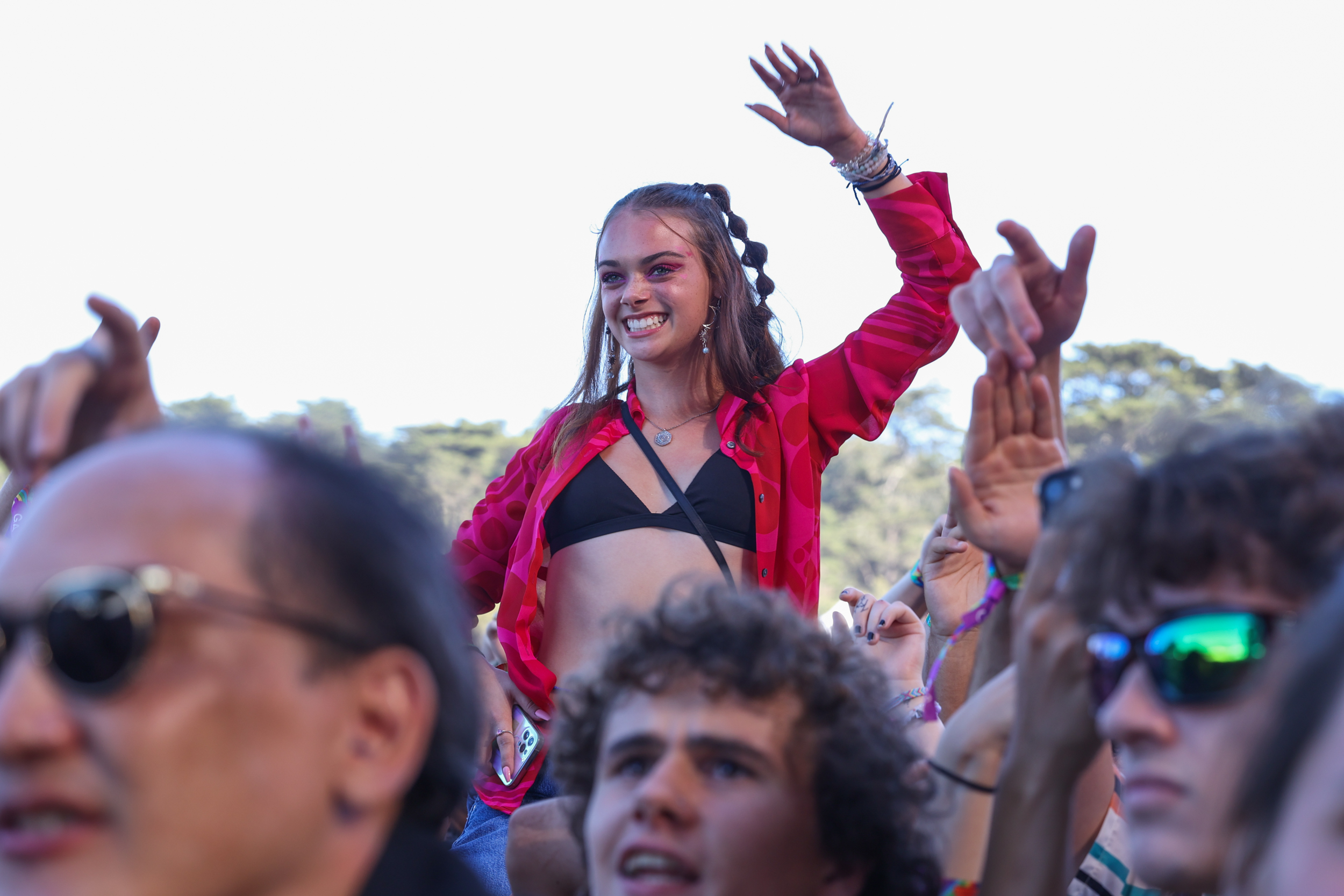Gen Z lives fast. Zoomers have the zoomies. The proof can be found on TikTok and Spotify. Toggle between the two platforms and a pattern begins to emerge: Videos with a pitched-up “tiny voice” effect; super-fast songs cranked to terminal velocity; vocals that sound like Alvin and the Chipmunks.
The hashtag “spedupsounds” has almost 10 billion views on TikTok. Faster remixes of pop hits are trending on Spotify. A Spotify-branded playlist simply entitled “sped up songs” has more than a million likes. The description? A cryptic “150%.”
Which begs the question, what does the sped-up trend mean?
We asked two Gen Z pop culture experts for a translation.
Jessica Yeung is a San Francisco-based DJ who frequents nightclubs like F8 and Cat Club. Now 23, her early 20s spanned peak Covid, and now that the quarantine has lifted, she believes new music trends skew faster because Zoomers are ready to rage.
“Tldr,” she said—for us old-timers, that means “too long, didn’t read”—“I think the pent-up energy of the pandemic and that want for a community dancing and energy makes a ton of sense as to why music has gotten faster. We’re all just a lot more antsy!”
Justine Rose Armen is a writer and documentary producer who lives in Oakland. She believes the sped-up trend may be Gen Z’s contrarian answer to chopped and screwed, a 1990s hip-hop remixing technique where the DJ slows down the tempo of a song. “Sped-up songs are the exact opposite of chopped and screwed,” Armen explained.
Still, pitched-up vocals are nothing new in hip-hop. Afroman’s 2001 single “Because I Got High” received a cartoonesque glow-up around 2007, when music blogs and YouTube began circulating an Alvin and the Chipmunks’ cover.
As The Guardian reported, the present-day sped-up trend has become synonymous with nightcore, a subgenre that surfaced around 2002, when Norwegian high schoolers Thomas Nilsen and Steffen Ojala Soderholm produced a 170 BPM (that is, very fast) song with squeaky vocals for a class project. Soon after, nightcore tracks proliferated on Limewire and other file-sharing platforms and forums.
Now, Gen Z’s nightcore revival is here to prove the 20-year trend rule, though as is on-brand with #spedupsongs, the cycle might be accelerating. Newly released singles and 2010s throwbacks are fair game, too. A 2022 compilation called “Nightcore Pop Songs” includes a warp-speed cover of Lady Gaga’s 2008 single “Poker Face.”
Yeung believes the trend also finds its roots in older genres, like Black techno and dance music. When she goes out on the weekends, she notices a lot of people voguing, a house dance that traces back to the late 1980s. Go back another 20 years, and you’ll find voguing’s precursor within Harlem’s ballroom dance scene. Madonna helped put the dance back on the map in the 1990s with the video for her single, “Vogue.”
The pitched-up effect has a genre-bending—and gender-bending—quality that aligns with hyperpop. Grounded in early 2000s internet culture, the genre prizes hyperactivity, strangeness and is popular within queer communities. Artists like 100 Gecs reach their youngest fans on TikTok. Suffice it to say, this music whips—in the speediest sense of the word.
Yeung and Armen agree that the trend has gone mainstream via TikTok. It’s true—young people do be on they phone, but it’s unclear whether pop music borrows nightcore from TikTok, or the other way around. Yeung believes it’s a chicken-or-egg question.
Either way, Yeung and Armen say the trend has multiple meanings. First, it shows that our attention spans may be shorter than ever.
“This could be super rogue, but I think people’s attention spans have gotten so bad from TikTok,” Yeung said. “The tiny voices are stimulating enough to catch people’s attention.”
Likewise, Armen said the sped-up trend is simply funny—it instantly turns a song into satire. While listening to nightcore on Spotify, Armen said she instantly thought of TikToker @adannaduru, who regularly posts pitched-up parodies with captions like “music @ white clubs be like.”
Beyond pure aesthetics, Yeung believes the trend resonates with Gen Z queer communities. “It sounds so different and definitely doesn’t cater to the typical listener, and that allows community spaces [...] to be more open and safe to marginalized identities,” Yeung said.
With this trend picking up more speed, nightcore remixes may even be eclipsing their root tracks. Armen points to the TikTok remix of Lil Uzi Vert’s “Just Wanna Rock.”
“It’s so good,” she said. “Who even cares about the original?”
